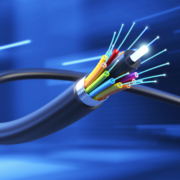What Is a Fibre Backbone?
Have you ever wondered what fibre backbone was? Has someone recommended it for your business but you’re still not sure what it is? In this article we discuss the fundamentals of a fibre backbone. So, what is fibre backbone?
Typically used in large commercial units such as warehouses, offices, schools and universities, A fibre backbone allows you to link multiple locations on the same network. For example, connecting your reception to the loading docks. A backbone cabling system is the glue that holds your entire business communication together. Fibre optic cabling is generally faster and more dependable in comparison to traditional copper cabling. As a result, this cabling system allows your business to communicate more efficiently thus improving productivity and quality of work.
Examples where fibre could link two locations
- Link main comms room to cabinets on several floors within the same building
- Connect data cabinet to a smaller zone sub cabinet (reception or warehouse)
- Two buildings of the same tenant can be connected
- Link cabinets on the same floor which are placed to keep the localised data cabling links under 90 metres
Why use Fibre Backbone?
Due to its ability to cover great distances with the highest bandwidth for most means of communication, fibre is the go cable solution for most businesses. Fibre optic allows you to have fewer cables, repeaters and it requires the least amount of maintenance and power. For instance, a single fibre optic cable can easily enclose 24 links between locations.
In addition, electromagnetic radiation interference does not affect fibre. This makes it feasible to transmit information and data with less disturbance and noise. In comparison to copper wires, fibre is lighter, requiring less metallic containment along its route. In conclusion, these advantages unravel other benefits that allow optical fibre to be the most logical choice for data transmission. Fibre is now the main transportation of all data such as video and voice communications.
Durability and Consistency
Due to the consistency and durability, more business owners are opting for fibre optic backbone networks. With the ability to link separate services such as CCTV, AV, Phones, Internet and Access Control, fibre gives you the most versatile cabling solution. Copper requires a link per services, with fibre this can all be done in a single cable via separated cores. With fibre you’re able to future proof your business and minimise future cost by installing a larger cable. To explain, your business might only require 4 cores, but you can choose to terminate an 8-core cable. Leaving 4 cores ready to be used for future advancements. Fibre Optic is commonly more expensive in comparison to copper for single links, however its more cost-effective if you require additional links along the same route.
Use Of Fibre Backbone
For businesses ran in large facilities, fibre optic cabling is a necessity for your buildings. With the ability to connect various data cabinet locations within one place, fibre cabling can connect greater distances than those covered by standard cablings such as Cat5e, Cat6 and Cat6a. These standard cables are all limited to a maximum link length of 90 metres whereas, Om3 can transmit 10 gigabits up to 300 metres and OM4 up to 450 metres.
Conclusion
Although copper backbone links are still commonly used in small offices or used as additional works, they’re not the best option for future proofing your business. To give your business the most headroom for new transmission speeds and connection requirements you should opt for Fibre optic backbone links as a standard requirement. With the advancement of technology and the requirement for bandwidth quickly increasing the ability of the internet, fibre optic technology has been able to match the high demand.
If you wish to discuss this further, please contact our highly experienced team.





Share this entry